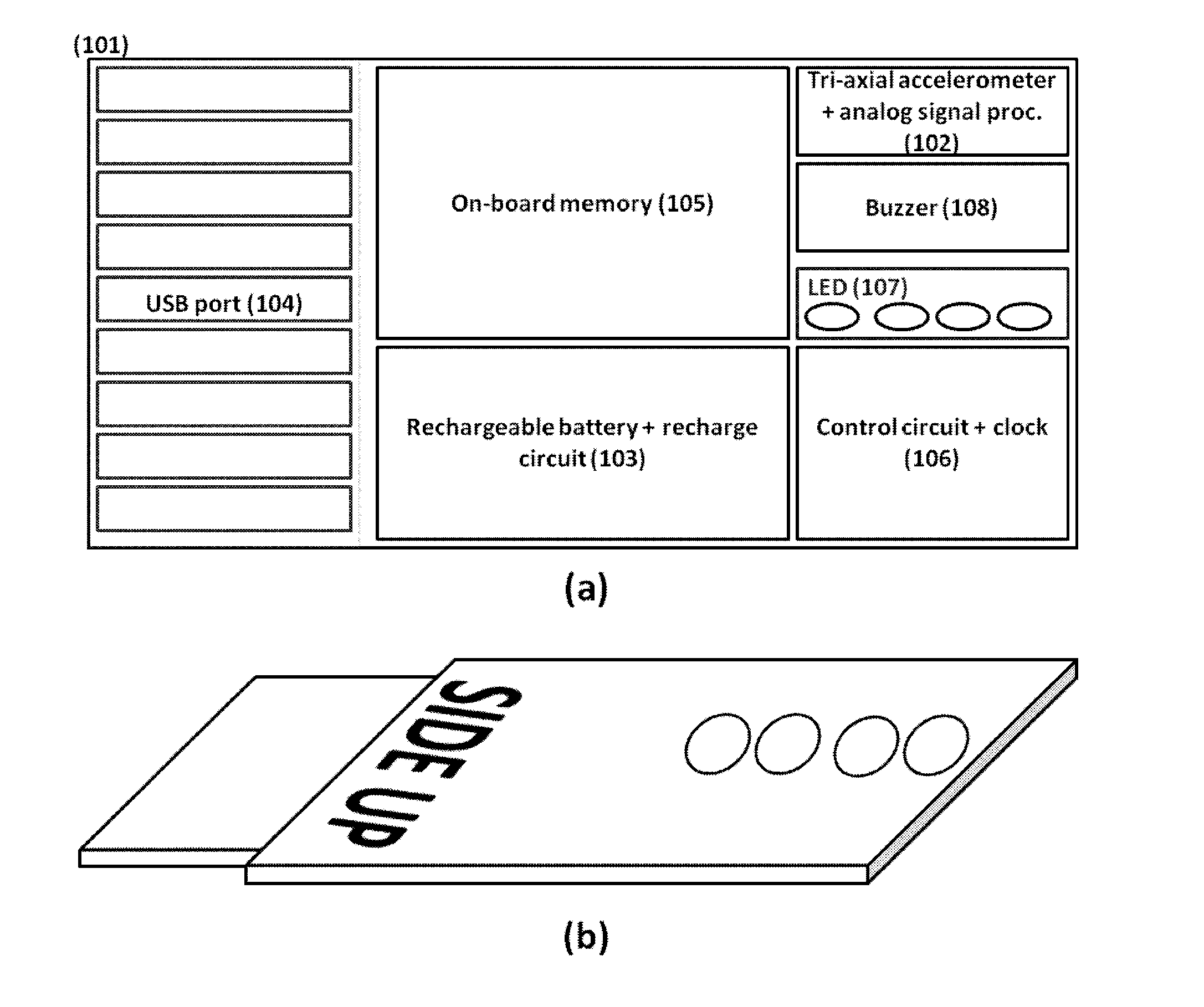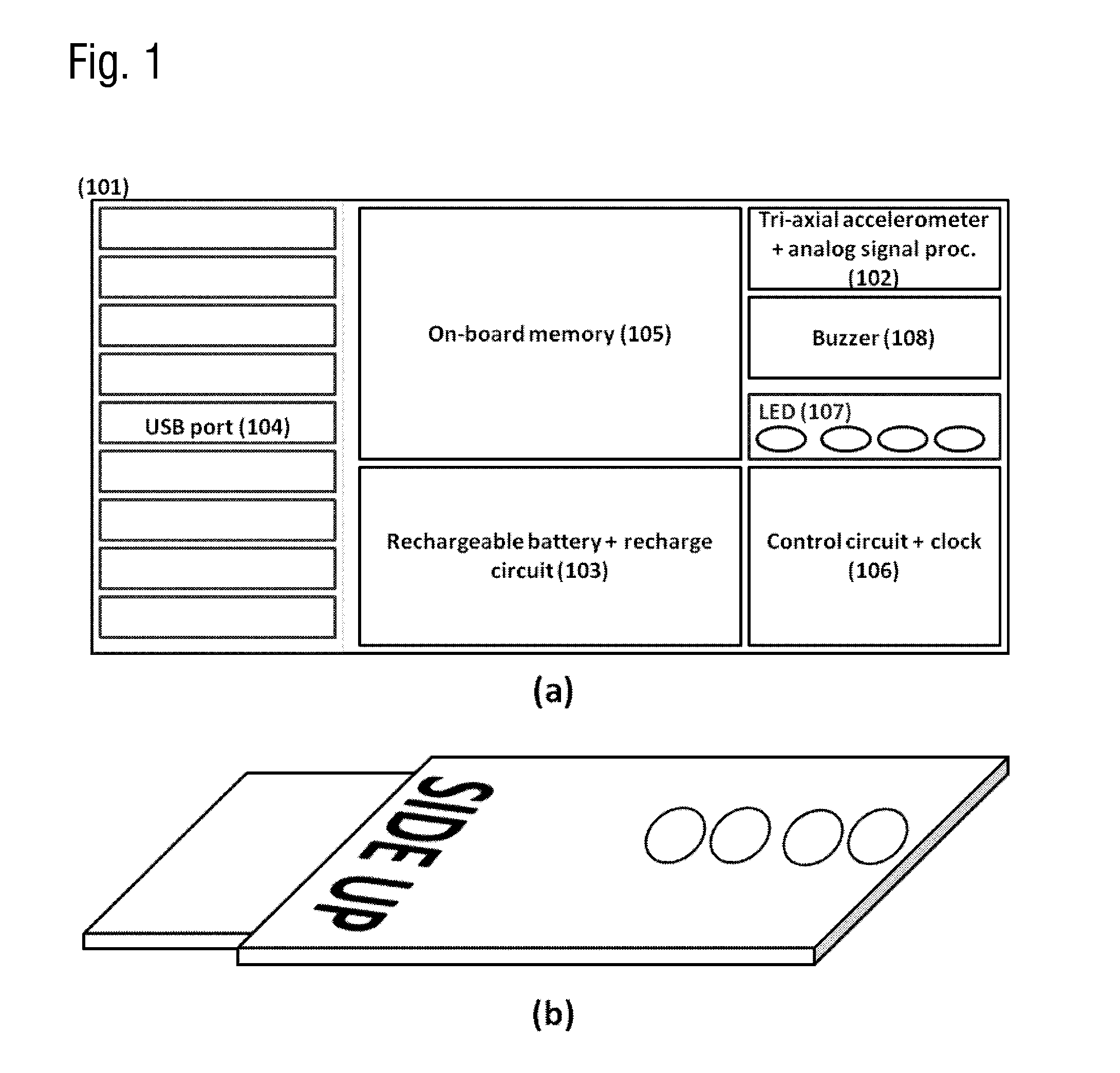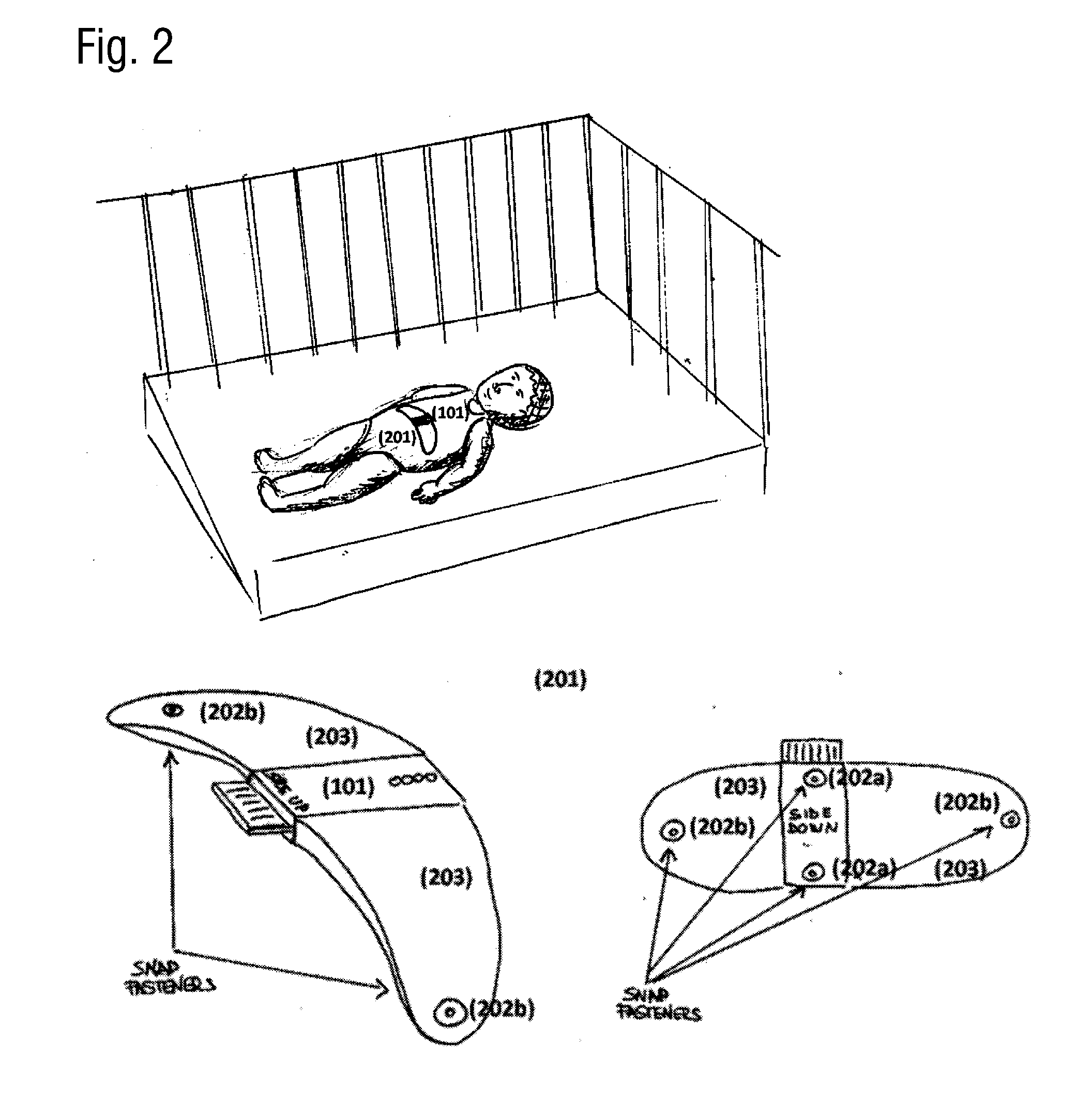Method And Device For Monitoring The Risks For Sudden Infant Death Syndrom And For Positional Plagiocephaly
a technology of positional plagiocephaly and infant death, which is applied in the field of monitoring the risks of sudden infant death syndrom and positional plagiocephaly, can solve the problems of system not being adopted in the normal home scenario by untrained people, mainly undiscovered sids, and inability to detect the disease, etc., and achieves low power consumption, small encroachment, and simple use.
- Summary
- Abstract
- Description
- Claims
- Application Information
AI Technical Summary
Benefits of technology
Problems solved by technology
Method used
Image
Examples
Embodiment Construction
[0033]FIG. 1 shows a monitoring device 101 for monitoring the risks of SIDS and positional plagiocephaly. The monitoring device 101 includes a block 102 composed by a triaxial accelerometer and by the analog circuits that are necessary to filter out the undesired frequencies, to avoid aliasing and other interference. All the modules of the monitoring device 101 are powered by the rechargeable battery 103, which is also connected to the USB port 104.
[0034]The monitoring device 101 also includes an on board memory 105, a control circuit or processing unit 106, four indicator LEDs 107 and a buzzer 108.
[0035]For easy transportation and use outside of the home environment of the proposed device, the rechargeable battery 103 (including the circuit for controlling the recharge process) is incorporated into the monitoring device 101 and it is connected to the USB port 104, such that current can flow from the USB port to the battery during the recharge process.
[0036]The battery 103 is connec...
PUM
 Login to View More
Login to View More Abstract
Description
Claims
Application Information
 Login to View More
Login to View More - R&D
- Intellectual Property
- Life Sciences
- Materials
- Tech Scout
- Unparalleled Data Quality
- Higher Quality Content
- 60% Fewer Hallucinations
Browse by: Latest US Patents, China's latest patents, Technical Efficacy Thesaurus, Application Domain, Technology Topic, Popular Technical Reports.
© 2025 PatSnap. All rights reserved.Legal|Privacy policy|Modern Slavery Act Transparency Statement|Sitemap|About US| Contact US: help@patsnap.com



